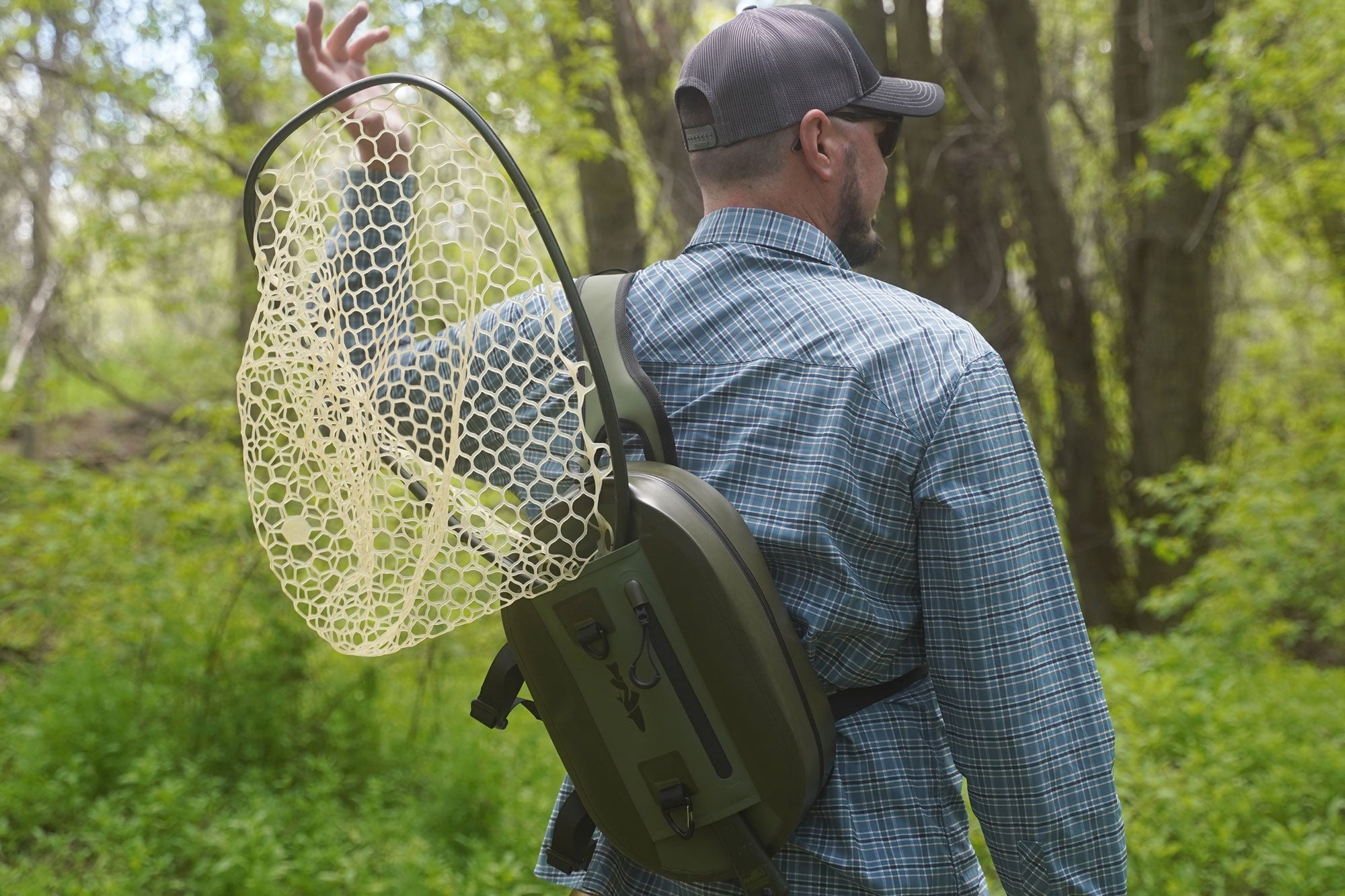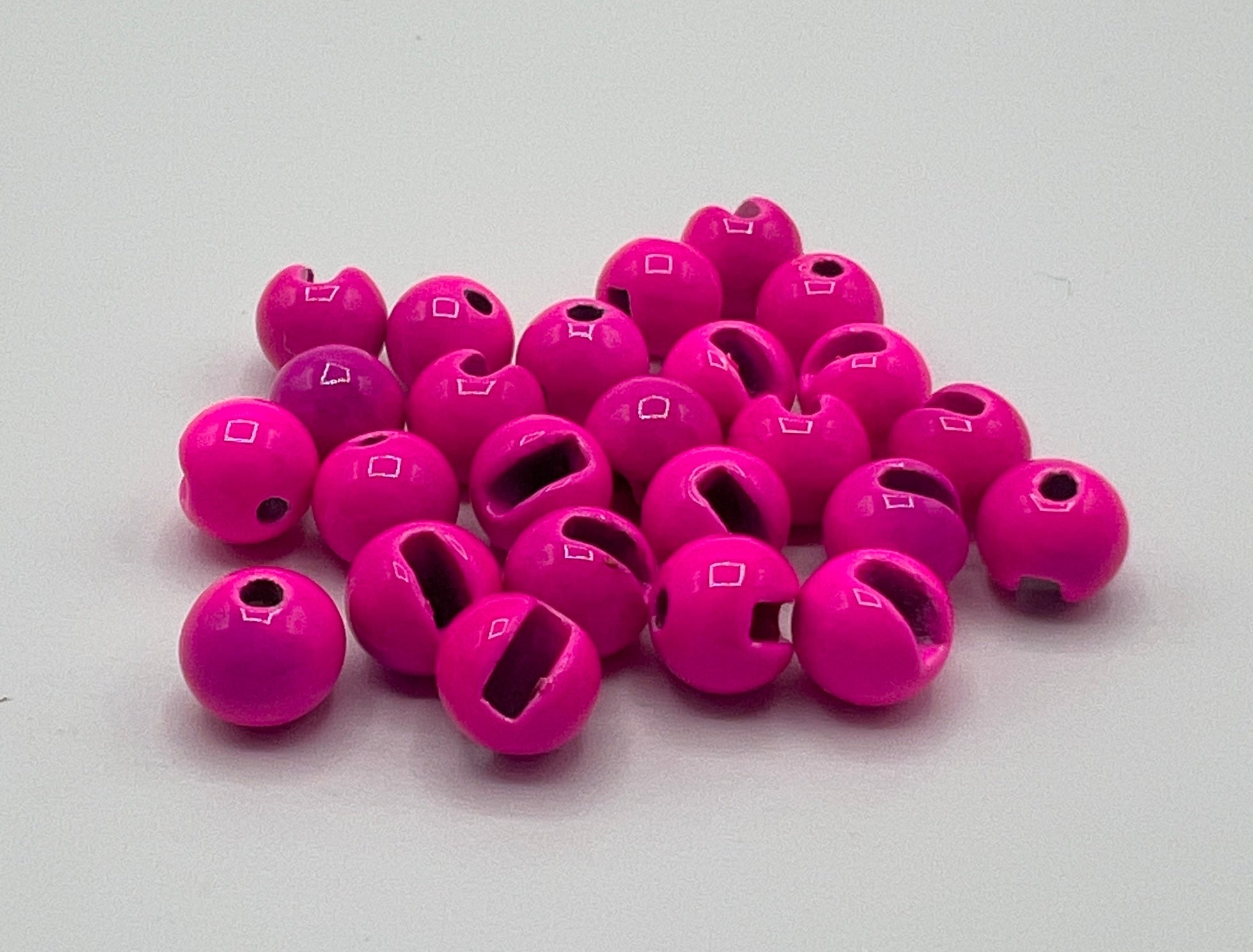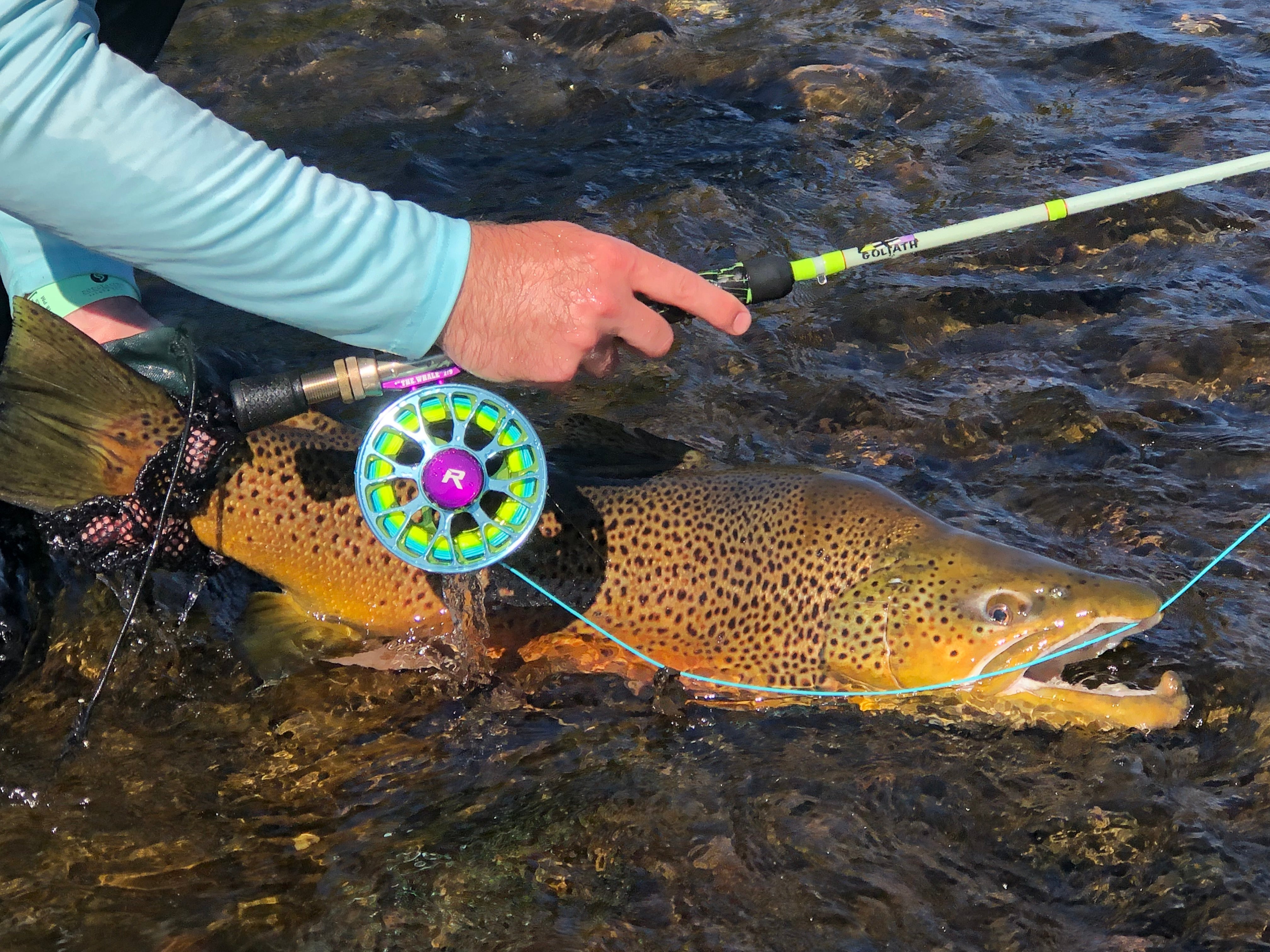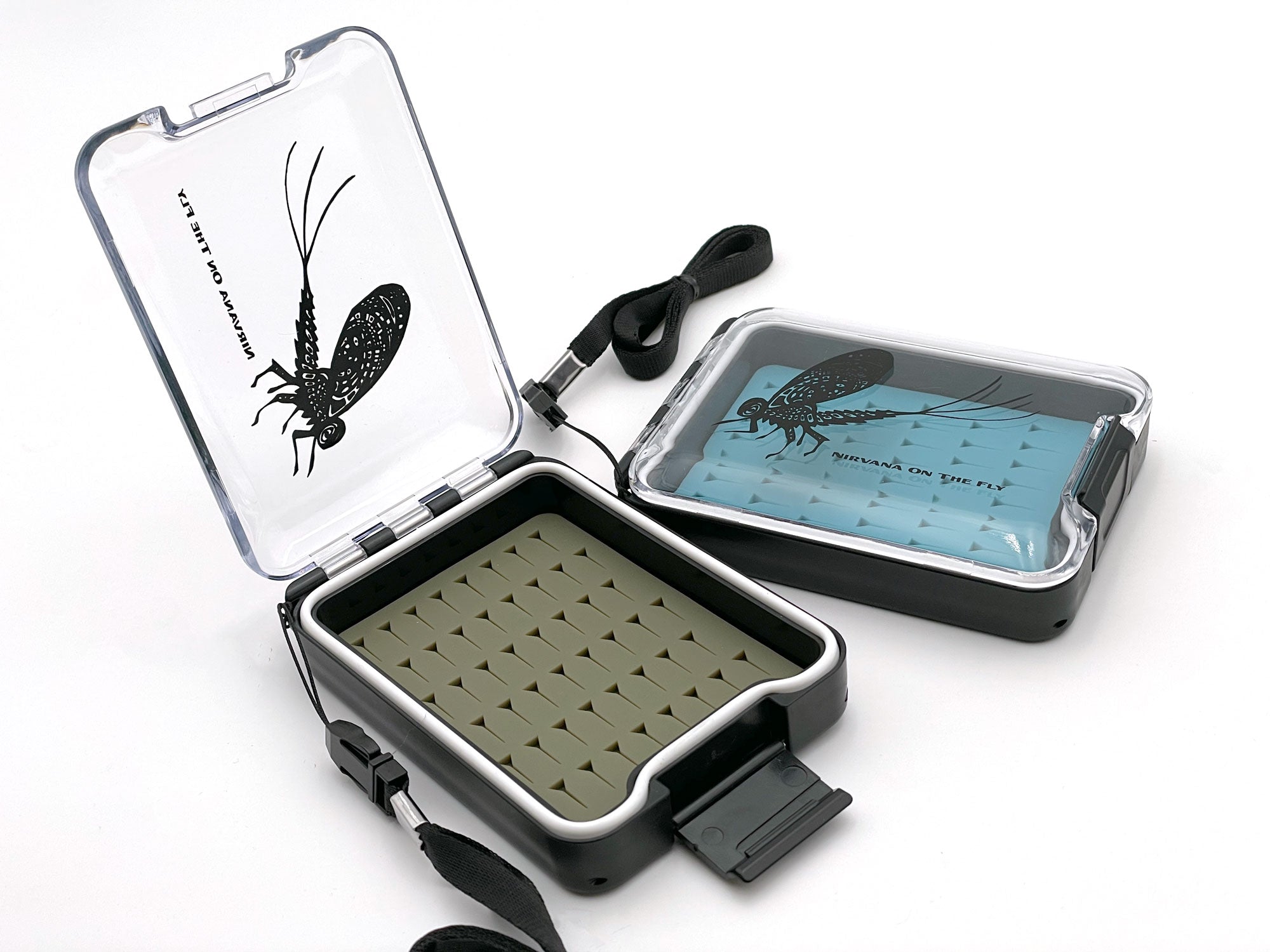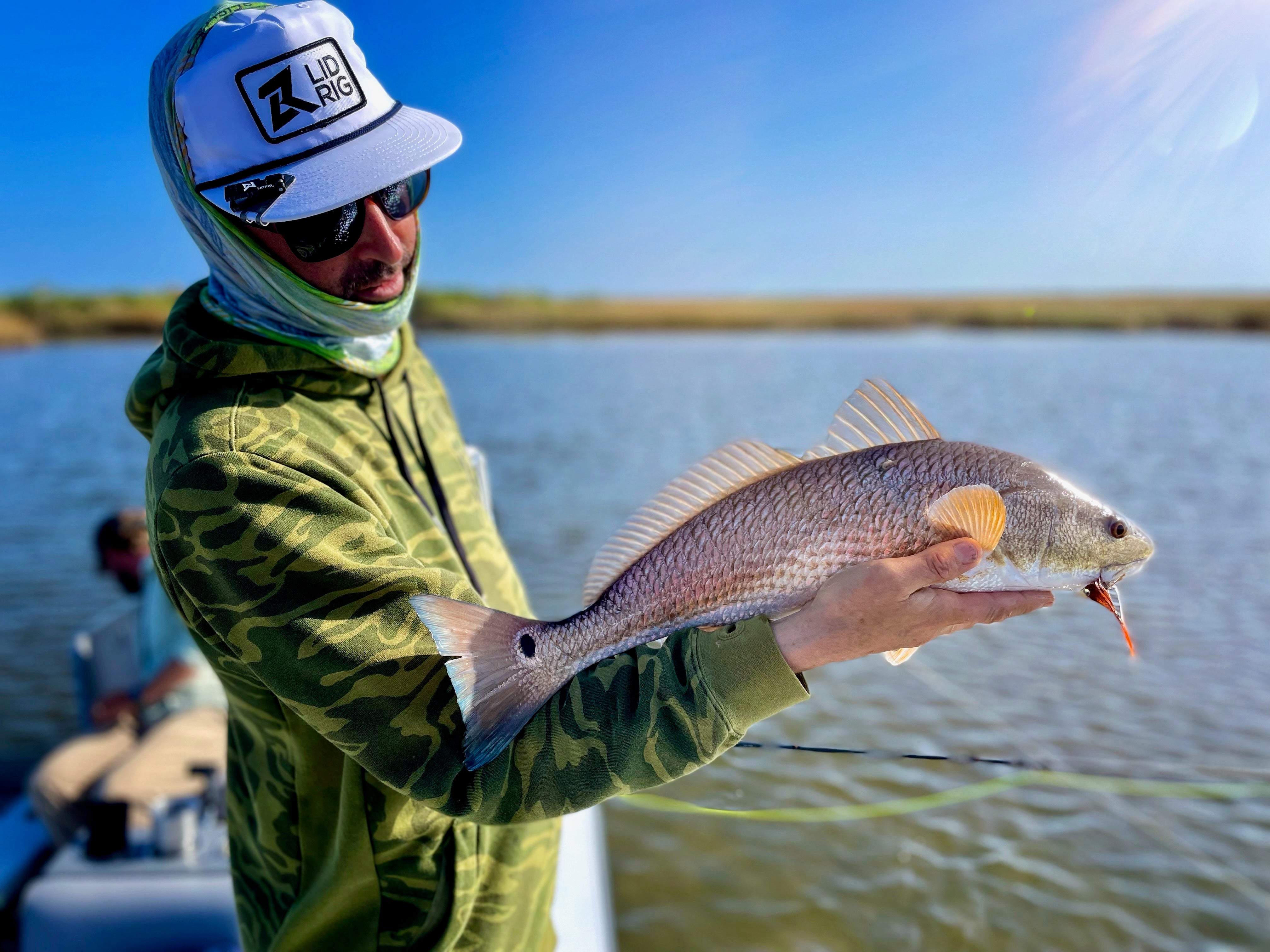Fly fishing, has become popularized again. The first big run was around “A River Runs Through It,” and has recently hit a second long-stride with the COVID debacle we all dealt with. Those that are new and old can often revisit the very basics. When we discuss the basics of fly fishing, you can broadly categorize the hobby into contact and non-contact fly fishing style. Here's an explanation of each. In the meantime, here is a player so you can listen to the fly fishing scenes choreographer.
Full Contact Fly Fishing Style
- Definition: Full-contact fly fishing involves maintaining a direct connection or 'contact' with the fly. This is typically achieved through a tight line and or firmer leader that transmits the feel of a fish striking the fly directly to the angler.
-
Techniques: Common techniques include nymphing methods like Czech, Polish, French, Spanish, or Modern nymphing. These styles often involve short casts, a tight line, and the fly being presented close to the bottom of the water body.
Another style that has an extreme goal of being a contact technique is streamer fishing. When streamer fishing the ideal tactical approach is to have a direct tight line to the fly. When this is present it is far easier to have a good hookset rather than a bump. However, this technique is is difficult to obtain and takes a ton of practice.
-
Tackle: Heavier thinner flies are often used to maintain contact with the substrate of the water. A longer leader or a specialized nymphing line might be used to enhance sensitivity and control. Enabling your flies to stay inline yet sink quickly to the correct zone for catching fish.
In streamer fishing, it is all about perfecting your cast so it turns over appropriately leaving no slack so proper leaders can be critical. The next is quickly removing slack and maintaining that tight scenario throughout your dead drift or twitch and strip techniques. Having rods of the correct length and variable stiffnesses can be critical. Euro nymphing-specific rods have sensitive design elements to the tip and butt sections. Whereas streamer rods are often preferred with an even stiffness and longer profile.
Lastly, wet fly and emerger tactics regularly employ tight line scenarios where you can directly employ action and control your flies so immediate contact is felt. This technique is also popular with partial-contact fly fishing styles and leaders.
- Sensitivity: The angler relies on several senses for the detection of a take. The sense of touch is used to detect strikes, feeling the fish through the line. Sensitivity can be extremely high with the correct tight technique and proper equipment.
- Visibility: In contact fly fishing, the angler often does not see the fish take the fly. The strike is felt rather than seen. For example, you may see a flash or have a sighter twitch. One of my favorites is nymphing and seeing the white of a trout's jaw appear as the nymph fly is sipped. You often see it far before feeling it.
Partial-Contact Fly Fishing Style
- Definition: Partial-contact fly fishing involves maintaining a direct connection or 'contact' with the fly fishing leader through 2/3s of the leader formula then moving to a more malleable piece of tippet to break the contact and allow for flexibility in the leader. This is typically used in indicator style fly fishing.
- Techniques: Common techniques include indicator nymphing methods like bounce rigs, 90-degree indicator fishing, and Hopper Dropper fishing. These styles require that you can cast at fair distances with heavier flies where a break in stiffness is required within the leader to allow for flies to drop faster and quickly penetrate the water column.
Wait, isn't Hopper Dropper a non-contact style? Yes and no. With larger flies, it is often critical to have a fly that turns over so it can sometimes be advantageous to thing of the hopper as an indicator only. Turn it over and create a good connection so that when you see that fly dip you can set it immediately.
I mentioned wet fly and emergency techniques above. Although common knowledge explains that the best tactic is a tight line or full-contact fly fishing with this style, I prefer partial-contact leader development with a full contact style. Like anything there are exceptions to the rule. A longer leader in this scenario allows me to sweep a run with less fly line in the water, hence moving fewer fish. I also prefer a more supple leader so I have extensive action in my light flies.
- Tackle: A mix of heavy and light flies are employed with this technique. Maintaining contact isn't the objective and instead water penetration is often the goal. Allowing the lines leader to break mid point will allow you to shoot your flies into the water with your cast. It will allow you to turn over your indicator as the leader is stiff until that point but post indicator your leader is again, supple enough to penetrate the various water columns.
When wet fly fishing it is very similar. You will have a stiffer leader for partial distance, allowing you to turn over flies but on that long leader you have a supple end that enables the key movement required to impart life like action on the emerger patters.
- Sensitivity: The angler relies on several senses for the detection of a take. The sense of touch is used to detect strikes, feeling the fish through the line. Although the sensitivity can be less than full contact it is maintaining a proper amount of contact through the system to allow for indication. This is why so many systems for nymphing aim to achieve a full-contact like delivery.
- Visibility: In partial-contact fly fishing, the angler often does not see the fish take the fly but instead sees the take via the indicator that is being used above the slack line scenario. The strike is observed and the hooks are set. The tighter you can get the connection through mending or arangment of weight under the indicator can often make a massive difference.
Non-Contact Fly Fishing Style
- Definition: Non-contact fly fishing is characterized by a lack of direct, tactile connection with the fly. The fly is often presented at a distance, and the line may not be tight between the angler and the fly.
- Techniques: This includes traditional dry-fly fishing, where the fly floats on the water's surface, and some streamer fishing techniques where the fly is allowed to swim or drift somewhat freely. In streamer fishing, you often go in and out of the two methods based on how you fish the flies and your various stripping tactics.
- Tackle: The equipment can vary widely, from light, floating lines for dry flies to sinking lines for streamers. The flies used in non-contact fishing are often designed to imitate the natural movement of prey in the water. Rod design here is widely varied and is by far more of a preference for each angler. I often fall back on the methodology that it feels best where you started. For example, I started with fast-action rods so I adjusted my casting techniques accordingly, and when I get a soft or mid-action rod and they feel underpowered so I regularly drive my cast harder. Whereas I know others who need that soft rod because they don’t want to manage their cast as much.
- Sensitivity: Since the line is not always tight, the angler relies more on visual cues to detect a strike, such as a splash or a visible take on the surface or an indicator but in those examples, you are relying on your input vs. when contact fly fishing you rely on all your inputs and the system.
- Visibility: Non-contact fly fishing often allows the angler to see the fish take the fly, making the visual aspect more crucial than the tactile. This is why so many people love fly fishing. It is something to experience when you see them take and impart action to hook the fish.
Summary
The primary distinction lies in the way strikes are detected and the level of direct control the angler has over the fly. Full-contact fly fishing focuses on tactile feedback and control, requiring a tight line and often targeting fish near the bottom. It is common that the tightness of the system is directly correlated to hooking the fish as a tight system to the hook will enable it to set itself on impact. Non-contact fly fishing, on the other hand, relies more on visual cues and often targets fish feeding at or near the surface. Whereas Partial-contact leaders and fishing techniques combine a bit of both worlds and make subtle adjustments to suit the circumstances. Each fly fishing style has its unique techniques, tackle, and challenges, making fly fishing a diverse and adaptable sport.
If you liked this article then you will likely appreciate this one.
***Do you want to get deals on equipment, fly fishing trips, and lots of information? Become a member of the Loyalty Club on the Fly Fishing Insider Podcast.

By Christian Bacasa
Host of the Fly Fishing Insider Podcast
Fly Fishing Insider Podcast Official Website
Instagram Fly Fishing Insider Podcast
Instagram Dupeafish
Facebook
Pinterest
Twitter
LinkedIn
Tumblr
Watch on YouTube



